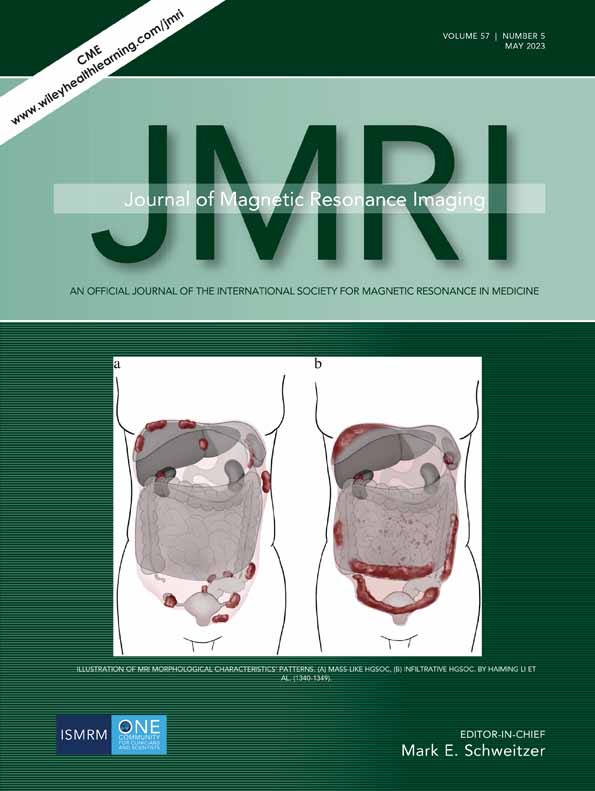MRI-Based Radiomics Nomogram for Preoperative Differentiation Between Ocular Adnexal Lymphoma and Idiopathic Orbital Inflammation
Lijuan Yang and Huachen Zhang contributed equally to this work.
Abstract
Background
Ocular adnexal lymphoma (OAL) and idiopathic orbital inflammation (IOI) are malignant and benign lesions for which radiotherapy and corticosteroids are indicated, but similar clinical manifestations make their differentiation difficult.
Purpose
To develop and validate an MRI-based radiomics nomogram for individual diagnosis of OAL vs. IOI.
Study Type
Retrospective.
Population
A total of 103 patients (46.6% female) with mean age of 56.4 ± 16.3 years having OAL (n = 58) or IOI (n = 45) were divided into an independent training (n = 82) and a testing dataset (n = 21).
Field Strength/Sequence
A 3-T, precontrast T1-weighted imaging (T1WI), T2-weighted imaging (T2WI), and postcontrast T1WI (T1 + C).
Assessment
Radiomics features were extracted and selected from segmented tumors and peritumoral regions in MRI before-and-after filtering. These features, alone or combined with clinical characteristics, were used to construct a radiomics or joint signature to differentiate OAL from IOI, respectively. A joint nomogram was built to show the impact of the radiomics signature and clinical characteristics on individual risk of developing OAL.
Statistical Tests
Area under the curve (AUC) and accuracy (ACC) were used for performance evaluation. Mann–Whitney U and Chi-square tests were used to analyze continuous and categorical variables. Decision curve analysis, kappa statistics, DeLong and Hosmer–Lemeshow tests were also conducted. P < 0.05 was considered statistically significant.
Results
The joint signature achieved an AUC of 0.833 (95% confidence interval [CI]: 0.806–0.870), slightly better than the radiomics signature with an AUC of 0.806 (95% CI: 0.767–0.838) (P = 0.778). The joint and radiomics signatures were comparable to experienced radiologists referencing to clinical characteristics (ACC = 0.810 vs. 0.796–0.806, P > 0.05) or not (AUC = 0.806 vs. 0.753–0.791, P > 0.05), respectively. The joint nomogram gained more net benefits than the radiomics nomogram, despite both showing good calibration and discriminatory efficiency (P > 0.05).
Data Conclusion
The developed radiomics-based analysis might help to improve the diagnostic performance and reveal the association between radiomics features and individual risk of developing OAL.
Evidence Level
3
Technical Efficacy
3




